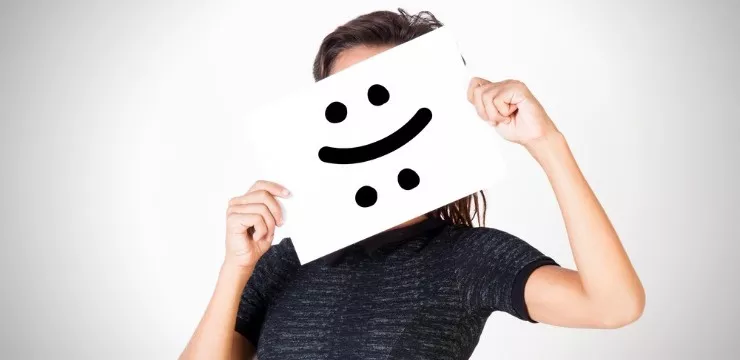
Change is everywhere in the rapidly advancing technological world we live in. Organizations must be flexible if they’re to survive, or risk losing relevance completely.
Because change is constant, organizations must devise an appropriate strategy for managing it. This is no easy task, especially when weighing up the factors involved.
Change can be managed in an organizational, structured fashion, evaluating the processes and procedures needed for a successful transition.
Though it is important to view things from this perspective, you should never neglect the human aspect. You can implement all the procedures you want, but if you don’t have the sponsorship of your team, what good is it?
This underlines the importance of evaluating change from a behavioral standpoint. It is people who make change possible, and who need to fully embrace your change philosophy for it to be successful.
When executing a change strategy, you’d be wise to incorporate a behavior change model. There are many to consider, but you can extract the relevant points from any behavior change model so it’s personalized on your individual circumstances.
With change management, you should avoid implementing random methods. Instead, focus on devising a plan that aligns with your vision. If this can be flexibly adjusted based on changing circumstances, you’ll be able to flexibly manage change as the ongoing process it is.
With a behavior change model, you’ll appreciate the dedication, expertise, and time it takes for change to take effect. Before you revolutionize your company, you should look at why you need to change, and who will benefit from it.
Once you’ve established your core goals, you can use one of the following theories to enhance the process. If you’re seeking inspiration in the meantime, check out one these amazing tools!
Nudge Theory
This behavior change model is an interesting theory which can be applied to multiple behavioral sciences. As you can probably tell from the title, the theory is based on nudging, or in other words encouraging people and inspiring them to change.
This in essence is the basis of behavioral change, where often people simply need some encouragement to embrace a new train of thought. Too often we get stuck in the status quo, and naturally reject anything that feels uncomfortable or threatens our security.
The theory is centered on eliminating the existing influences which are too often a barrier to change. This doesn’t simply involve removing them though, rather exploring them to understand how they motivate staff.
There are many unhelpful nudges which cause people to resist change, and these are either accidental or deliberate. By applying this theory, you can evaluate what influences human behavior, and derive what positives should be encouraged.
There are many influences which can change people, but the complexity of channeling these while removing negative ones is greater than you’d think. Once you can design the choices your team makes, those responsible for decision making and preferences, you can mold your organization into a change-ready unit.
To be compatible, these choices must be aligned with the way people think. Compared with other theories, this behavior change model is more sophisticated. It looks at diverse methods of transitioning, while eliminating traditional change methods which can strangle your organization.
What’s most important about the nudge theory is the way it accounts for differences in opinions, knowledge, and feelings. By embracing differences, and by understanding change isn’t a one-size-fits-all approach, you can create a more personal change experience.
This involves assessing the reality of different situations, alongside the characteristics of human behavior to reduce the resistance faced by multiple companies.
Bridge’s Transition Model
This model specializes in transition, rather than concentrating on the change itself. This qualifies the theory as a behavior change model.
Though the difference between change and transition is small, understanding the succinct gap between the two can be the difference between success and failure. By putting more emphasis on transition, you can look at internal influential factors.
Change can happen unwillingly, without us knowing it, but transition is a concerted effort which takes time. To successfully transition, change must be embedded in your organization’s culture.
This model exemplifies three main stages:
Relinquishing
Before you can move on, you must let go. When change is first introduced, people often counteract it with resistance. This is down to feelings of anger, resentment, fear, sadness, and frustration.
This can leave staff feeling demotivated and disillusioned, but to overcome this they must accept new beginnings and train their brains to move on.
Neutral
Here staff will experience confusion, impatience, and uncertainty. These emotions serve as a bridge to new horizons, where people have some attachment to the past but are finally starting to see a way forward.
Productivity might drop due to anxiety and skepticism, but that’s natural at this stage. Despite these negative connotations, it’s important to focus on renewed opportunities for creativity, innovation, and renewal.
A New Dawn
With your support and guidance, staff will have entered a stage of acceptance. They’ll feel energized and excited about the future, and you’ll finally start to realize the benefits of change.
Not only will staff be embracing change, but they’ll fully appreciate its importance and will be motivated by how it benefits them.
This is a joyous stage of proceedings, boosted by renewed energy levels and a passion to learn more.
To maintain engagement, exercise fun activities like these.
WalkMe Team
WalkMe spearheaded the Digital Adoption Platform (DAP) for associations to use the maximum capacity of their advanced resources. Utilizing man-made consciousness, AI, and context-oriented direction, WalkMe adds a powerful UI layer to raise the computerized proficiency, everything being equal.



